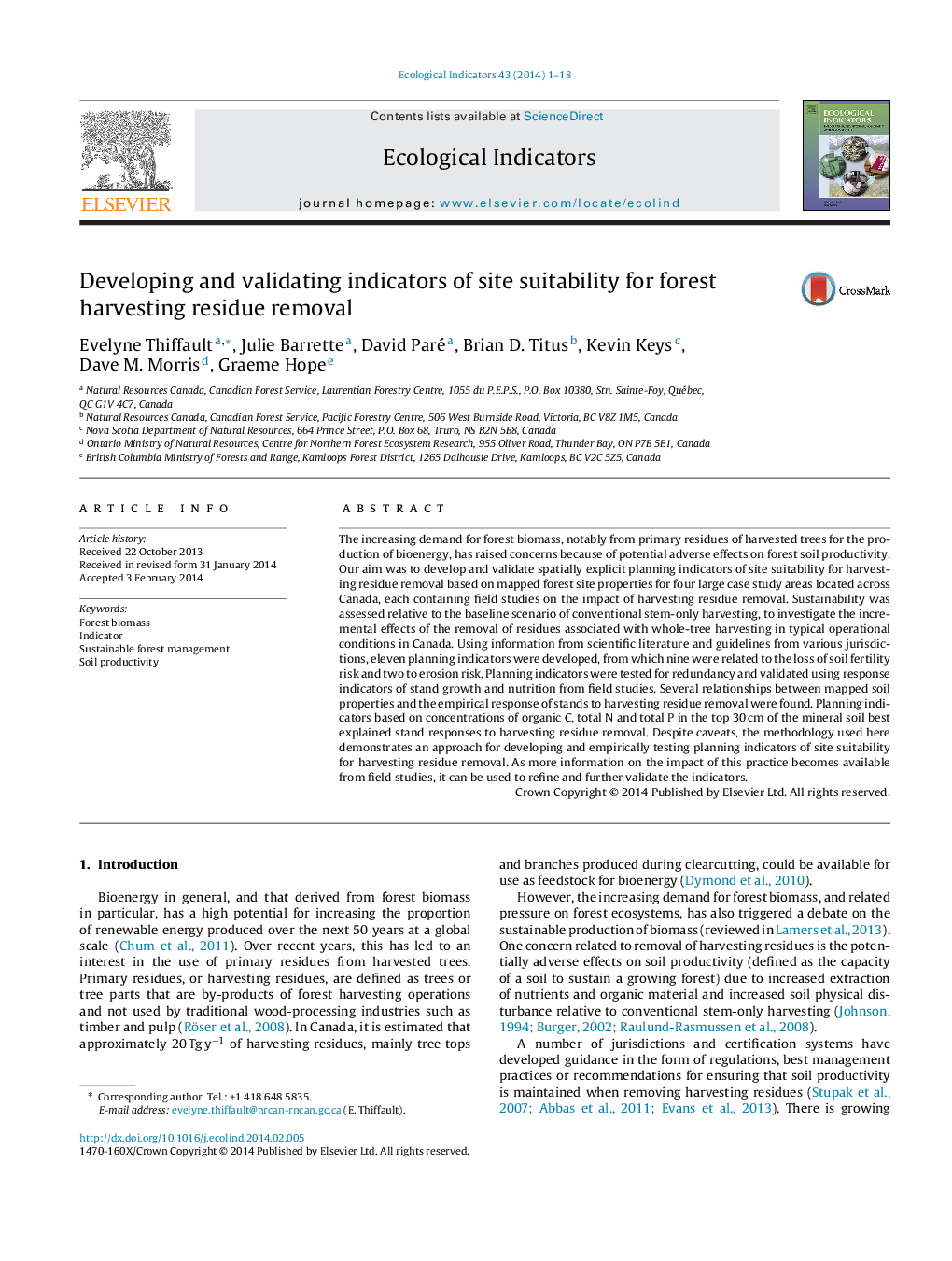| Article ID | Journal | Published Year | Pages | File Type |
|---|---|---|---|---|
| 4373153 | Ecological Indicators | 2014 | 18 Pages |
•Planning indicators of site suitability for harvesting residue removal are developed.•Indicators are displayed on maps and based on topography and forest soil properties.•Validation is done using effect of residue removal on trees measured in field trials.•Organic C and total P and N in mineral soil are good indicators of site suitability.
The increasing demand for forest biomass, notably from primary residues of harvested trees for the production of bioenergy, has raised concerns because of potential adverse effects on forest soil productivity. Our aim was to develop and validate spatially explicit planning indicators of site suitability for harvesting residue removal based on mapped forest site properties for four large case study areas located across Canada, each containing field studies on the impact of harvesting residue removal. Sustainability was assessed relative to the baseline scenario of conventional stem-only harvesting, to investigate the incremental effects of the removal of residues associated with whole-tree harvesting in typical operational conditions in Canada. Using information from scientific literature and guidelines from various jurisdictions, eleven planning indicators were developed, from which nine were related to the loss of soil fertility risk and two to erosion risk. Planning indicators were tested for redundancy and validated using response indicators of stand growth and nutrition from field studies. Several relationships between mapped soil properties and the empirical response of stands to harvesting residue removal were found. Planning indicators based on concentrations of organic C, total N and total P in the top 30 cm of the mineral soil best explained stand responses to harvesting residue removal. Despite caveats, the methodology used here demonstrates an approach for developing and empirically testing planning indicators of site suitability for harvesting residue removal. As more information on the impact of this practice becomes available from field studies, it can be used to refine and further validate the indicators.
